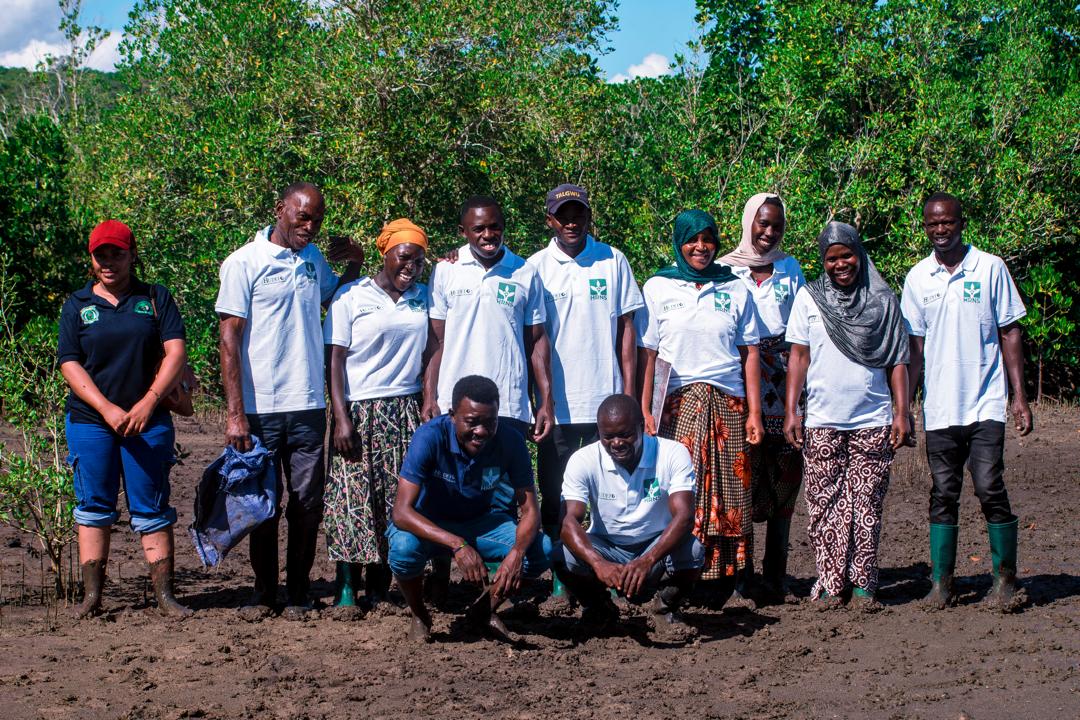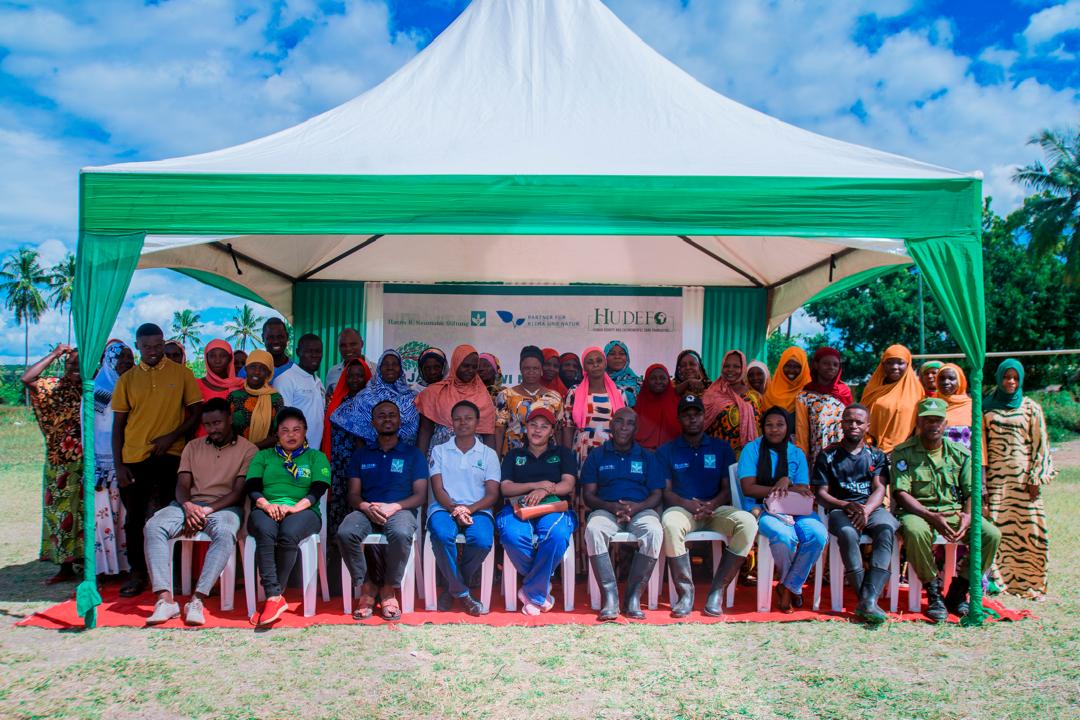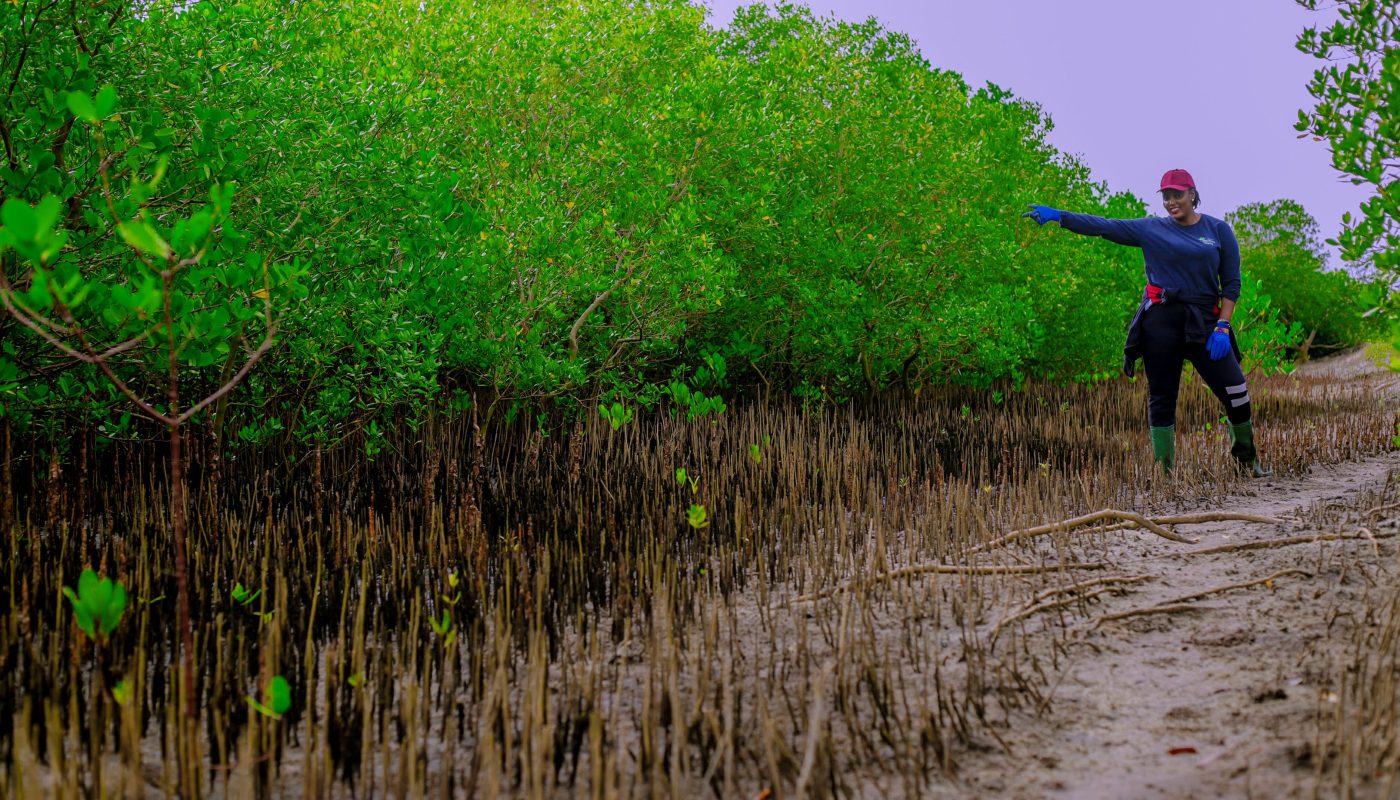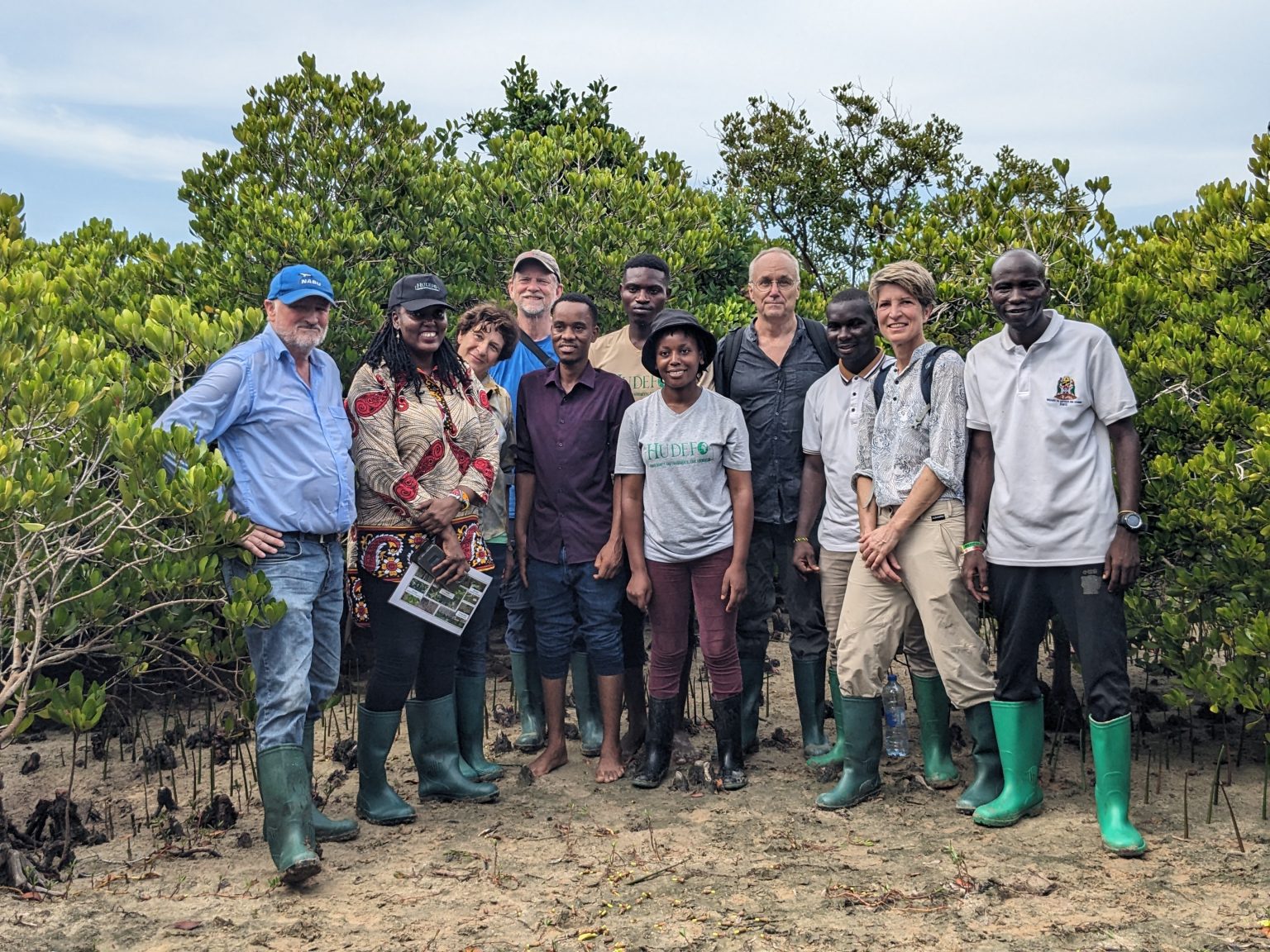Climate Action


1. JAMII, USTAWI NA MIKOKO PROJECT
The Jamii, Ustawi na Mikoko project is a one-year initiative (2025 -26) which is funded by Hanns R. Neumann Stiftung and implemented by Human Dignity and Environmental Care Foundation (HUDEFO) focused on restoring mangrove ecosystems while empowering local communities through sustainable practices. Its goal is to restore 30 acres of degraded mangrove forest in Mbanja, by planting 10,000 mangrove seedlings/propagules and creating mangrove nurseries. Alongside restoration, the project supports alternative livelihood development, environmental education, and capacity building that strengthen governance, farming, and financial skills.
The project is taking place in Mbanja Ward, Lindi Urban District, Lindi Region of Tanzania, an area that forms part of a broader 23,000-acre mangrove forest zone, with approximately 130 acres in Mbanja itself. Primary beneficiaries include the residents of Mbanja Village include farmers, youth, women, and others living near mangrove forests. Also targeted are members of the Village Natural Resources Committee (VNRC), local schools (such as Mbanja Primary), and stakeholders (local government, conservation bodies) who will help sustain project outcomes.
The mangrove forests around Mbanja 130 acres of a broader 23,000 acres are under threat from salt pan expansion, deforestation for wood/fuel, pollution, and climate-change effects such as sea-level rise. Biodiversity loss, reduced protection from storms, loss of livelihood support (fishing, wood harvesting), and diminished carbon sequestration capacity are among the risks faced by the community.
The project was officially launched on June 28, 2025, and commenced its core activities aimed at environmental conservation and community empowerment. The launch event was attended by over 175 participants and various stakeholders. The project later commemorated International World Mangrove Day on July 26, 2025, during which hands-on training was provided for Mbanja Primary School students and other community members in mangrove identification, nursery preparation, and planting techniques.
How it's Being Implemented
- - Establish mangrove nurseries to raise seedlings
- - Regular planting of mangrove propagules in degraded areas
- - Awareness campaigns and workshops on the importance of mangroves, species identification, planting/mangrove nursery techniques
- - Capacity training for VNRC in financial & administrative management and regenerative farming practicess
- - Hands-on practice: field training, organic mulching, bio-spraying, composting, etc.


2. MANGROVE RESTORATION & CONSERVATION
Mangroves are vital ecosystems that protect coastlines coastlines, store carbon, and support marine ecosystems. They are the breeding grounds for brids, fish and crustacea. Arising in the intertidal zone between land and sea, these miraculous forests grow in challenging conditions. The trees take root in soils that are waterlogged and oxygen-poor, alternately submerged and exposed to the air as the tide rises and falls. In these seemingly impossible circumstances, they not only survive but thrive. In turn, they help us thrive too. The total area of mangroves in Tanzania decreased from 117,396 ha in 1996 to 110,787 ha in 2020. Tanzania’s mangroves store up to 8% of the country’s total fossil fuel CO2 emissions.
HUDEFO works with communities on restoring and conserving these crucial habitats, promoting environmental health and climate resilience. At present we are work in collaboration with the Beach Management Community in Kigamboni, and engage with communities in Lindi.

3. CAPACITY BUILDING
HUDEFO provides trainings and workshops to equip communities, particularly women and youth, with the skills and knowledge to become environmental stewards. Through their own motivation and the trainings provided environmental stewards advocate for sustainability and participate in conservation efforts.

4. YOUTH DIALOGUES & KIDS MASTERCLASSES
HUDEFO fosters environmental awareness in the next generation. We organize youth dialogues
We have different campaign like Kids masterclass,children art and climate café, children and kids green tour whereby we have reached 1648 children’s up to 2023.Also we joined different global campains to make the children inclusive in climate action and environmental conservation. Example Kids First, From our Heart, kids to COPs.

5. MICROFOREST ACTIVITIES
HUDEFO’s micro forest initiative focuses on creating small, dense forests within urban areas and schools. The micro-forest program tackles environmental issues at a local level. By creating dense pockets of trees within cities, they enhance biodiversity, improve air quality, and mitigate the urban heat island effect. Additionally, these microforests encourage students and community involvement, fostering a sense of ownership and environmental responsibility
